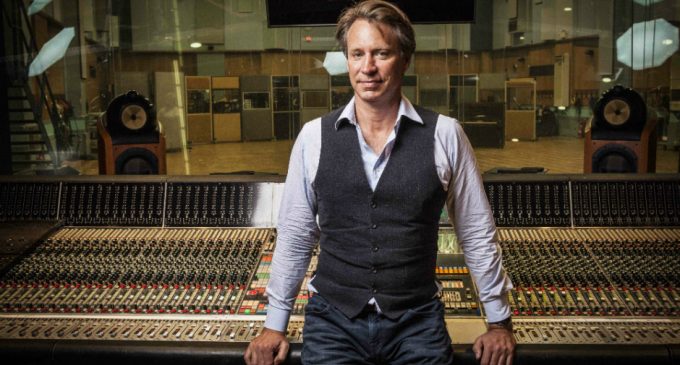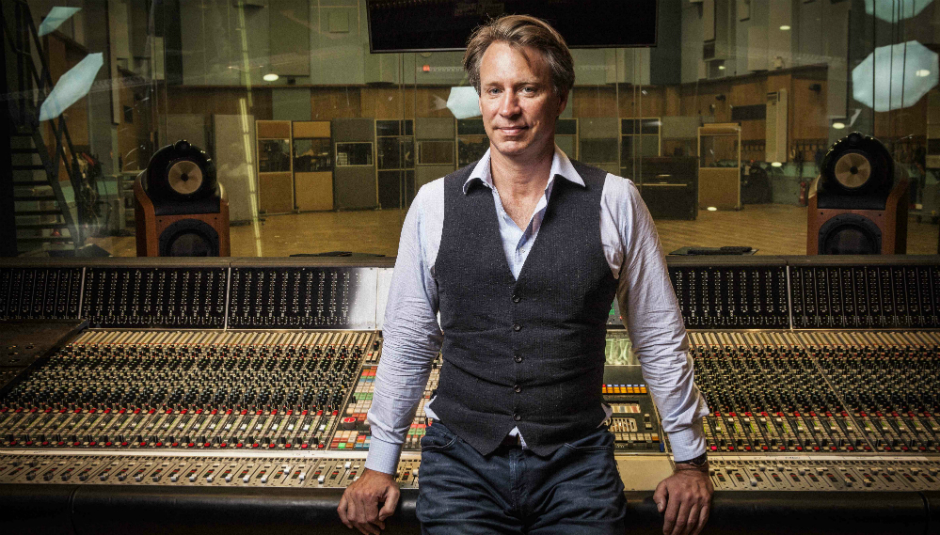“The White Album isn’t the sound of the band breaking up”: DiS Meets Giles Martin / In Depth // Drowned In Sound

This November marks the 50th anniversary of one of popular music’s most definitive and enduring landmarks. In a remarkable burst of creativity, The Beatles eponymous 1968 album redefined the boundaries of what a record could be with a sprawling, eclectic and mesmeric double album which remains singularly unique in the annals of rock music – both for its music and the myriad myths that surround its creation and its ultimate role in the eventual dissolution of the band just over a year after its release.To celebrate this anniversary, Apple Records have put together an extraordinary reissue of the record, containing the original demos for the album recorded at George Harrison’s Knifauns residence in Esher, Surrey. These remarkable “Esher” demos capture the band in a candid and intimate light, categorising the genesis of songs such as ‘While My Guitar Gently Weeps’, ‘Dear Prudence’, and ‘Revolution’ in their earliest forms. Alongside this are a huge number of outtakes, demos and unreleased tracks from the sessions to give an insight into the unorthodox recording sessions for the album. But possibly the most fascinating aspect of the reissue is a striking new remix of the album from Giles Martin, following on from his remarkable work on the Cirque de Soleil Beatles Love project and the excellent 2017 reissue of Sgt Pepper’s Lonely Hearts Club Band.Having had the chance to write about the influence that The White Album has had on my life earlier this month I was incredibly fortunate to have the opportunity to visit Abbey Road studios to meet Giles and talk about his experience of remixing the album and how not to be fearful, the challenge of approaching such a monumental project, the legacy of the album on subsequent musical generations, and why the frequently-accepted story of the band’s fractious and disintegrating relationship during the sessions may not stand up to actual scrutiny of the evidence.—
DiS: It sounds like so much work has gone into this reissue. When did you first start working on it?Giles Martin: We started last December on the actual mixes. The plan was to mix the whole album before Christmas and start listening to the outtakes, because it does, as you say, take a long time. And also it’s one of those things where you have to have breaks because otherwise you go crazy – especially the listening, because you have to listen to everything and give every song, every take, the same amount of attention as the previous one. Because otherwise…if you’re listening to 25 takes in a row and you are comparing one, two, three, four… on take 23 you’ve got to listen as much as 15. So you get a cup of tea or a piece of cake or whatever and things just go like that.So I do it in sporadic stages and have other teams of people working on things. We mixed the whole record and then in my standard sort of miserable format, I got to Christmas and then realised we needed to remix it again because it wasn’t right.So, yeah, you just start work. You know from writing an article – you just start doing it and then you know that it’s going to finish at some point.How did you decide which takes to use in terms of what best reflected the process of the recordings?I have to think about what I’m trying to do, and that’s trying to tell the story of the making of a really famous record. The biggest revelation was the Esher demos because I’ve already got everything laid out for me without any work at all, really. I’m mixing and bits and bobs, but they were pretty much there as a backbone of The White Album.And then it’s the passageway, so you know that you want—there’s no point me putting on a track that’s too similar to the finished version – although we do have a version of ‘Yer Blues’, but that’s kind of a visceral track. So you want to make sure it’s different enough, and also it’s interesting to listen to and it’s good enough to put on a record. So those are the things.
Kevin Howlett and Mike Heatley, who are a team that work on this as well, they would argue to put different mixes of a song on, and to me, that’s just not as interesting as a different performance. The key thing is: does it tell a story? Is it worth listening to it on its own? If you didn’t know the other song existed, would this be interesting to listen to?
Were the Esher demos the first time the band got together before the album, and did that process of doing demos ahead of going in the studio differ from their normal process?
Yeah, it’s the first time I’m aware of. I think they would record things, but lose or wipe them over or whatever. They certainly play around with tape machines – I mean, that’s where ‘Tomorrow Never Knows’ came from. If you think about that, and that was…1966?
Only two years before. The Beatles are…it’s like doggy years, you know? One year is seven years. So I think they definitely had tapes, but it was a very different process, The White Album.




There are no comments at the moment, do you want to add one?
Write a comment